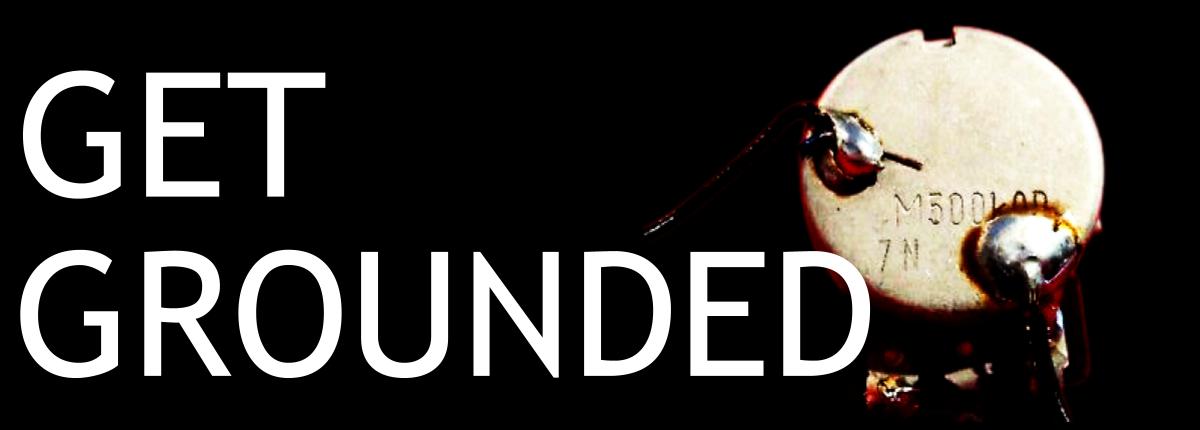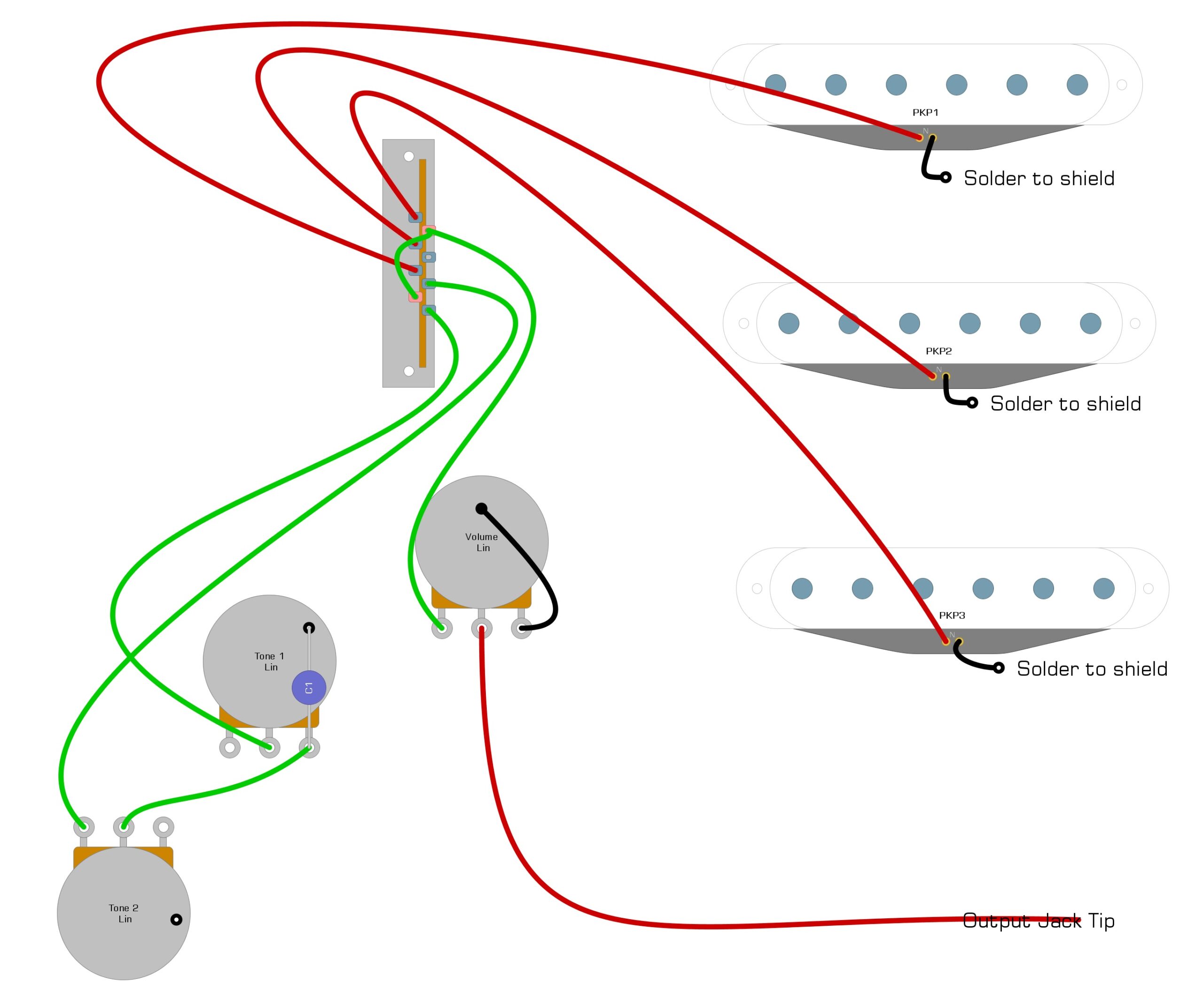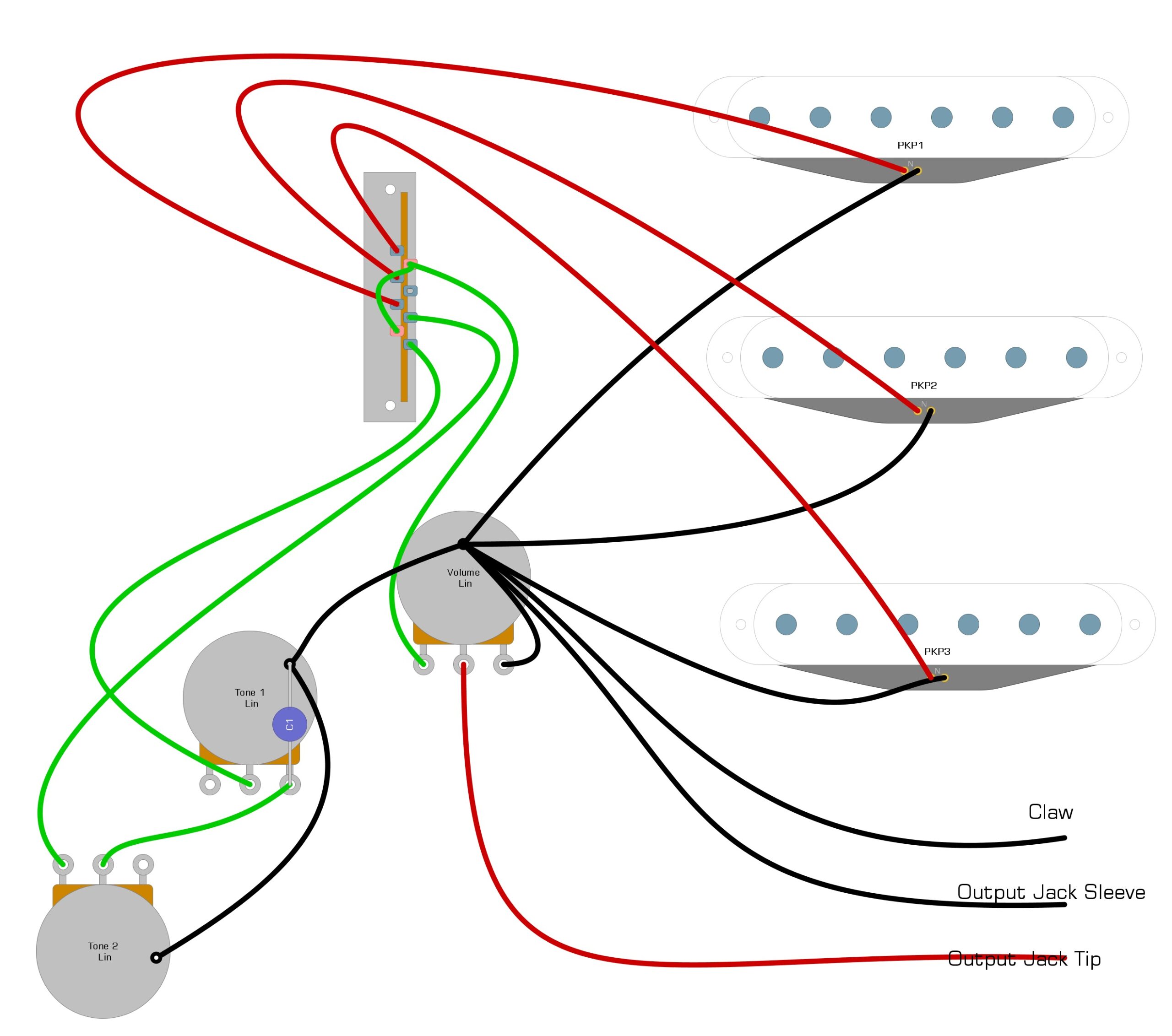
By Ed Malaker
Posted 09/13/2022
Many guitar players write to Humbucker Soup with questions about grounding pickups to pots. We believe that grounding pickups to pots is a good move; in this article, we’ll discuss what makes it a good decision.
Why Grounding Pickups to Pots Makes Sense
There are two main reasons why grounding a pickup to a potentiometer is a good idea:
Easy to Troubleshoot
Most players solder a pickup’s Ground wire to the back of the volume pot. The main reason for this is that it makes the wiring easy to follow and problem-solving more manageable. If all of the Ground wires on your pickups go to the back of the volume pot, you only need to worry about where the Hot wires go. Even with the additional wires, humbucker pickups end up being one Hot and one Ground, after you solder and tape off everything.
Easy to Solder
Another reason to keep all your ground wires in the same place is that they are easier to solder. The potentiometers are large components and take a significant amount of heat to get the solder to adhere and hold your wire. As you add more wires, you begin to collect a clump of solder that melts quickly and accepts new solder much faster. This mound of solder also protects the potentiometer from accidental overheating, which could damage the internal components.
When Wouldn’t You Ground Your Pickup to a Pot?
When the design of the guitar gives you a better option, you don’t need to solder the ground wire of a pickup to the back of the volume pot. The best example of a guitar that doesn’t use the volume pot is the Fender Telecaster. Many models use the metal bridge to ground the bridge pickup, eliminating the need to run a wire to the back of the volume control.
Are There Alternative Places to Ground Pickups?
Yes, there are several other places you can solder the ground wire of your pickup beside the volume pot without worry. You can solder the ground wire anywhere other ground wires are connected, including the back of any other volume or tone controls. If there’s a ground wire connected to the switch, you can solder the wires to the chassis of the switch if it makes sense to do so.
Shielding
One popular way to reduce the number of ground wires throughout your guitar is to shield the guitar with copper or aluminum tape or conductive paint. When you shield the guitar, you’re applying the metal tape or paint to cover the entire pickup and electronics cavities in a homemade metal box. This is an attempt to surround as much of the guitar electronics as possible. You then solder the shielding to your output jack with a short wire. The metal casing of all components touches the shield, grounding them, and you can solder the ground wire of your pickup anywhere on the shielding as well.
Shielding helps reduce the amount of noise that single-coil pickups create, and it will also reduce the number of wires in your electronics cavity.
In Example 1, we illustrate a common way to wire a Fender Stratocaster using black Ground wires.
Example 1
In Example 2, we illustrate what the same wiring would look like on a Shielded Fender Strat.
Example 2

Summary
As you can see, grounding pickups to pots is a good idea. In fact, we recommend soldering your pickup’s ground wire to the back of the volume pot in almost all cases. It’ll help prevent any shorts or unexpected behavior when you work the controls. Additionally, shielding is a great way to quiet down the guitar and reduce the number of wires, especially if your guitar has single coils. If the pickup has a shield wire that grounds the pickup chassis, like the bare wire on many humbuckers, it should also go to the back of the volume pot.
We hope you’ve found this guide to grounding pickups to pots helpful and useful — if it has been, please feel free to share this post on Facebook and Twitter. For more articles on guitar electronics, visit humbuckersoup.com.

